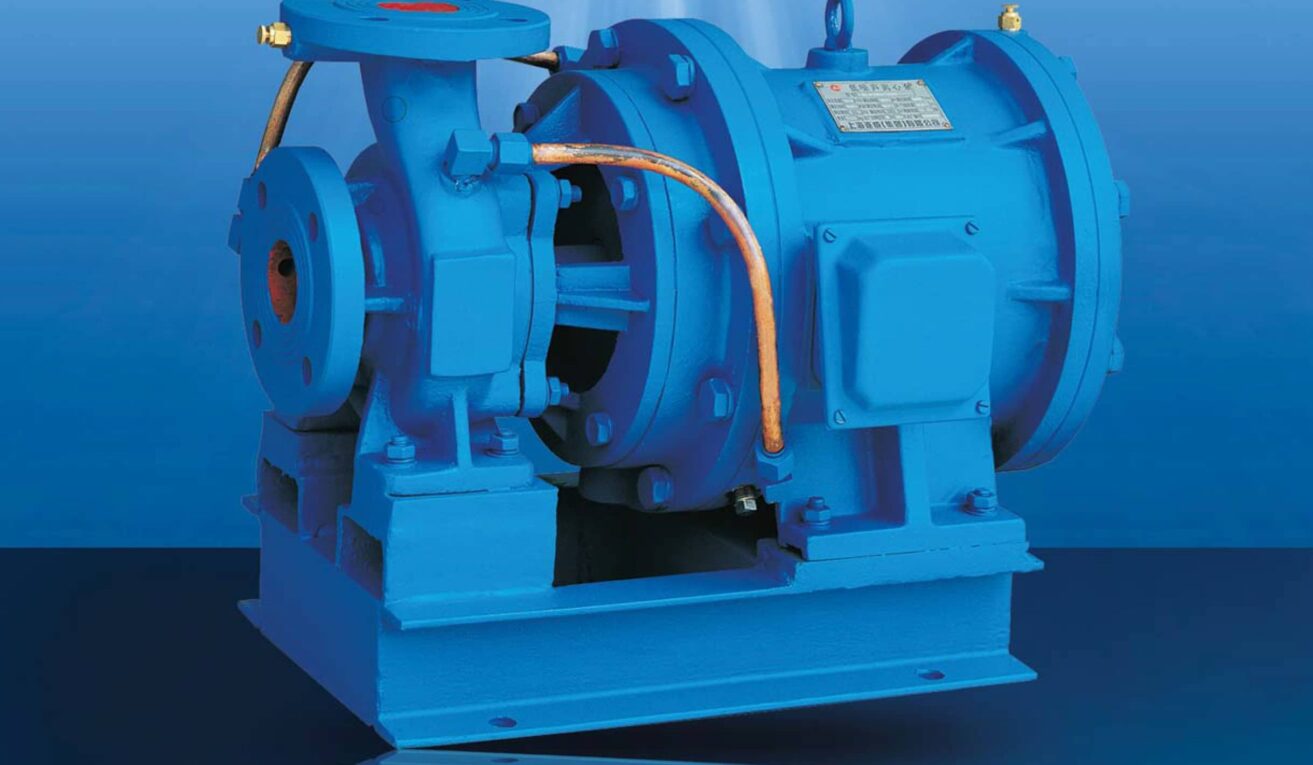The centrifugal pump is a mechanical device that is commonly used for liquid transfer or hydraulic transfer purposes. Centrifugal pumps work by converting rotational kinetic energy or, in simple terms, rotating mechanical energy into hydrodynamic energy known as pressure energy. Centrifugal pumps use a spinning impeller attached to a rotating shaft driven by an engine or motor to impart velocity and pressure to an adjacent fluid.
Working Principle of Centrifugal Pumps
Centrifugal pumps work based on the simple principle that increasing the velocity of a liquid increases its pressure. As the impeller rotates inside a pump casing, it “throws” or pushes the liquid outwards from the eye of the impeller towards the outer circumference of the casing due to centrifugal force. This outward movement of liquid creates pressure head that forces liquid through the pump and out the discharge port for use.
Main Components of a Centrifugal Pump
The main components of a Centrifugal Pump are:
Impeller: The impeller is a rotating feature that increases the velocity and pressure of the fluid being pumped. It consists of a series of vanes attached to a central hub.
Casing: The casing encloses the impeller and directs the flow of liquid. It has an inlet where liquid enters and an outlet where liquid exits at higher pressure.
Shaft: The shaft transmits rotating torque from the driver to the impeller for rotation. It connects the impeller to the driver.
Seals: Seals prevent the pumped liquid from leaking out of the casing at locations like the shaft. Mechanical seals or packings are commonly used.
Bearings: Bearings support the pump shaft and allow for smooth rotation of the impeller inside the casing. Ball or roller bearings are used.
Types of Centrifugal Pumps Based on Application
Horizontal Centrifugal Pump: Horizontal pumps have a horizontally positioned casing and impeller shaft. They are self-priming, portable, easy to install and suitable for handling larger flows at lower heads. They are commonly used for water supply, irrigation, sewage and industrial liquid transfer applications.
Vertical Centrifugal Pump: Vertical pumps have a casing positioned vertically with the impeller shaft oriented vertically upwards. They are mainly used for processes where NPSH is low and suction lift is high. They maintain prime even when run dry. Great for pumping from deep wells.
Submersible Pump: Submersible pumps are hermetically sealed vertical pumps fully submerged in the pumped liquid. They have motors integrated with the pump body. Used widely for borewell water extraction in agriculture.
Multistage Centrifugal Pump: Multistage pumps have multiple impellers housed in a single casing with staged diffusers between impellers. They can produce higher discharge pressures than single stage pumps and are used for high-pressure applications like boiler feed, desalination plants etc.
Advantages of Centrifugal Pumps
High efficiency: These pumps are more than 80% efficient, an advantage over positive displacement pumps.
Self-priming: Horizontal centrifugal pumps can lift liquid from below the pump and prime themselves without foot valves.
Durability: Closed impellers and casing avoid direct contact between pump parts and fluid being handled, making them long-lasting.
Reliability: Centrifugal pumps have fewer moving parts compared to reciprocating pumps, leading to higher reliability.
Low maintenance: Due to fewer wearing parts like valves.
Scalability: Available in wide ranges of sizes and materials for various flow rates and head conditions.
Applications of Centrifugal Pumps
Following are some common applications of centrifugal pumps:
Water supply: Pumping raw, potable, waste and process water in water supply systems, industries and buildings.
Irrigation: Pumping water from open wells and ponds for spray and drip irrigation of farms.
Sewage and draining: Pumping sewage and wastewater from collection points and draining purposes.
Chemical processing: Pumping chemicals, hazardous fluids, viscos slurries etc. in manufacturing industries.
Oil and gas: Transferring crude oil, petroleum products, natural gas liquids in upstream and downstream applications.
Marine applications: Bilge draining and ballast water transfer in ships and marine vessels.
Heating, ventilation and air conditioning: HVAC primary and secondary chilled/hot water circulation loops.
Firefighting: Fire pumps for fire protection systems in buildings, factories and other critical facilities.
Centrifugal pumps are versatile pumps that find wide application across almost all industries due to their high efficiency, reliability, and scalability. Their simple operating principle makes them easy to understand, install and operate. Centrifugal pumps continue to be the workhorse pump in liquid transfer applications globally.
*Note:
1. Source: Coherent Market Insights, Public sources, Desk research
2. We have leveraged AI tools to mine information and compile it
About Author – Vaagisha Singh
Vaagisha brings over three years of expertise as a content editor in the market research domain. Originally a creative writer, she discovered her passion for editing, combining her flair for writing with a meticulous eye for detail. Her ability to craft and refine compelling content makes her an invaluable asset in delivering polished and engaging write-ups. LinkedIn


